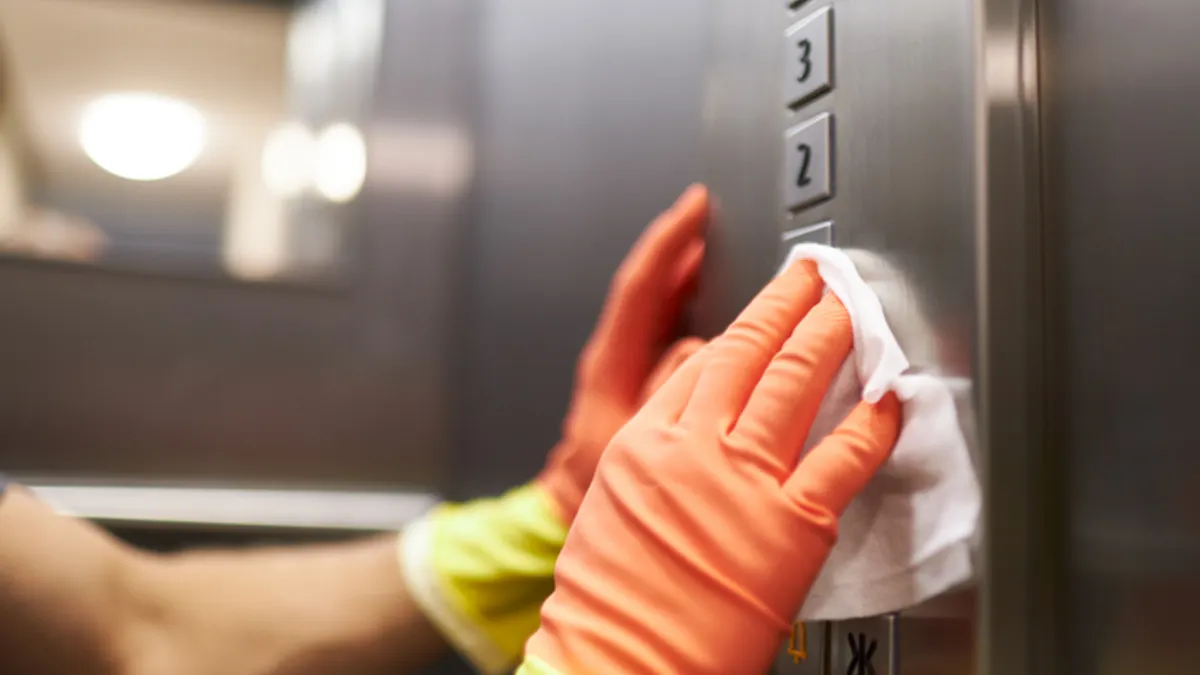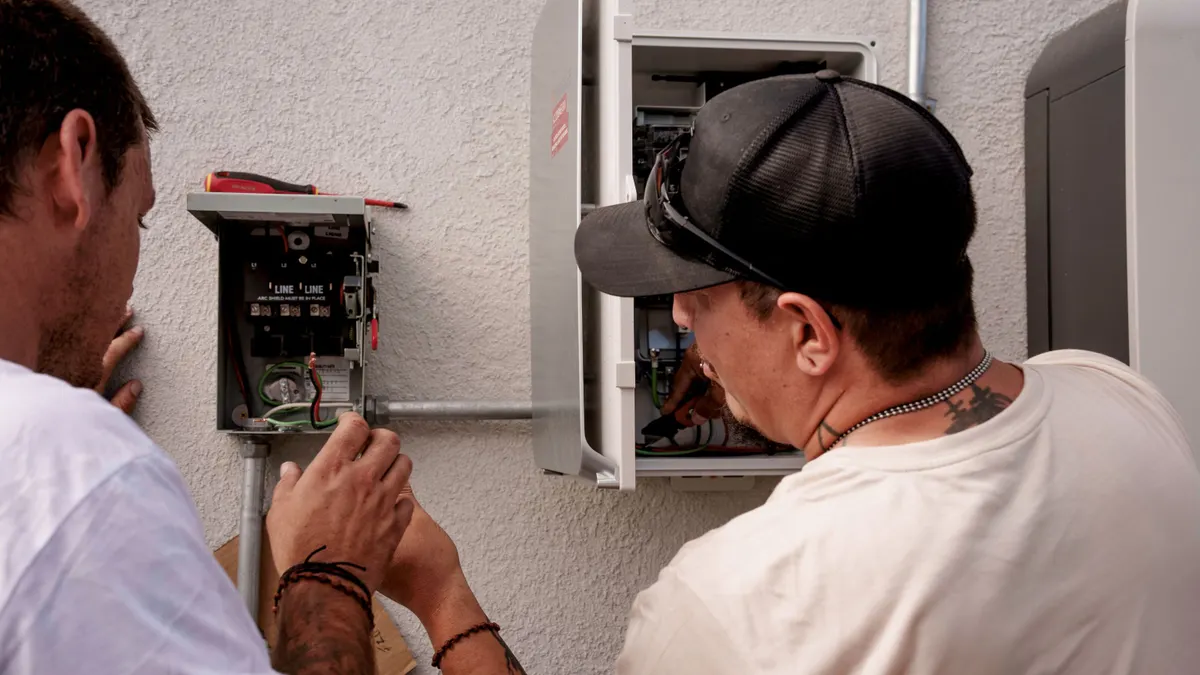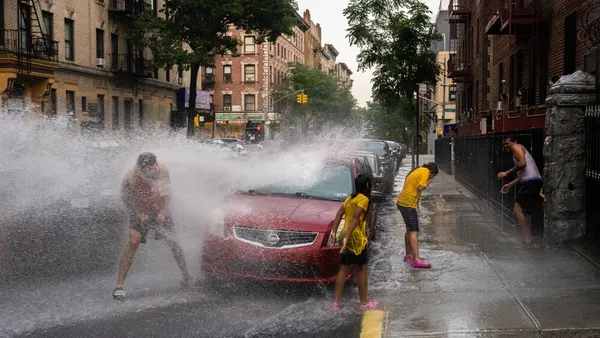Dive Brief:
- Cleaning surfaces with disinfectant wipes during the COVID-19 pandemic likely helped reduce microbial contamination on surfaces, an experiment by Clemson University researchers indicates.
- The researchers found that up to 59% of coronavirus variants on glass surfaces was transferred to the wipes and up to 30% on soft, non-porous surfaces like vinyl was transferred, suggesting that the wipes can be an effective addition to cleaning procedures when the goal is to limit microbial surface contamination.
- “Disinfectant wipes can significantly and rapidly reduce coronavirus contamination and cross-contamination risk,” the researchers said in their paper, released in September in the journal Environmental Microbiology.
Dive Insight:
The researchers structured their experiment to understand how much of the effectiveness of wipes stems from physically removing contaminants from surfaces, compared with the contaminants getting inactivated by the chemicals on the wipes. Their conclusion: It’s mainly the physical removal of the contaminants from surfaces.
“Based on the recovery patterns, physical removal appears to be the predominant mechanism, with chemical inactivation contributing,” the researchers said.
But chemical inactivation also plays a role in preventing the spread of infectious agents by reducing the risk of the wipes themselves spreading the contaminants, the researchers said.
“Because pathogens can be removed from a surface and transferred to the wipe, the used wipes that do not contain any disinfectant chemicals represent a source of pathogen transmission from contaminated surfaces to uncontaminated surfaces,” they said.
On hard surfaces like glass, 23% to 59% of contaminants were transferred to the wipes, leaving 2-5% of the virus on the surface. On soft, non-porous surfaces like vinyl, 21% to 30% of contaminants were transferred, leaving 16-24% on the surface. The researchers didn’t say whether the remaining contaminants were removed by chemical inactivation.
For the experiment, the researchers used three types of microbial contaminants — SARS-CoV-2 surrogates, bovine coronavirus and human coronavirus — and three types of disinfectants: polypropylene, hydrogen peroxide and quaternary ammonium compound.
Manual wiping and mechanical wiping, using a Gardco Gardner-scrub, were equally effective in removing contaminants, they said. Spray-and-wipe processes were less effective, because wipes, which are pre-wetted, “deliver a consistent dose of disinfectant with minimal preparation.”
That makes them “ideal for targeted treatment of high-touch or smaller areas while reducing the risk of user error,” they said.










